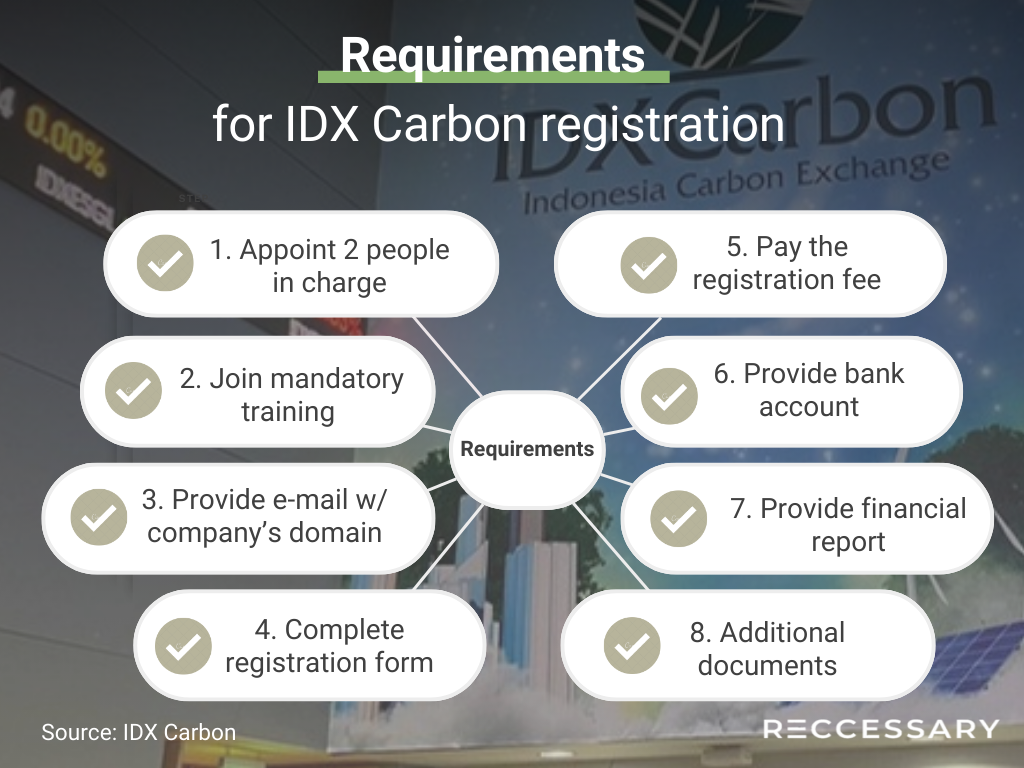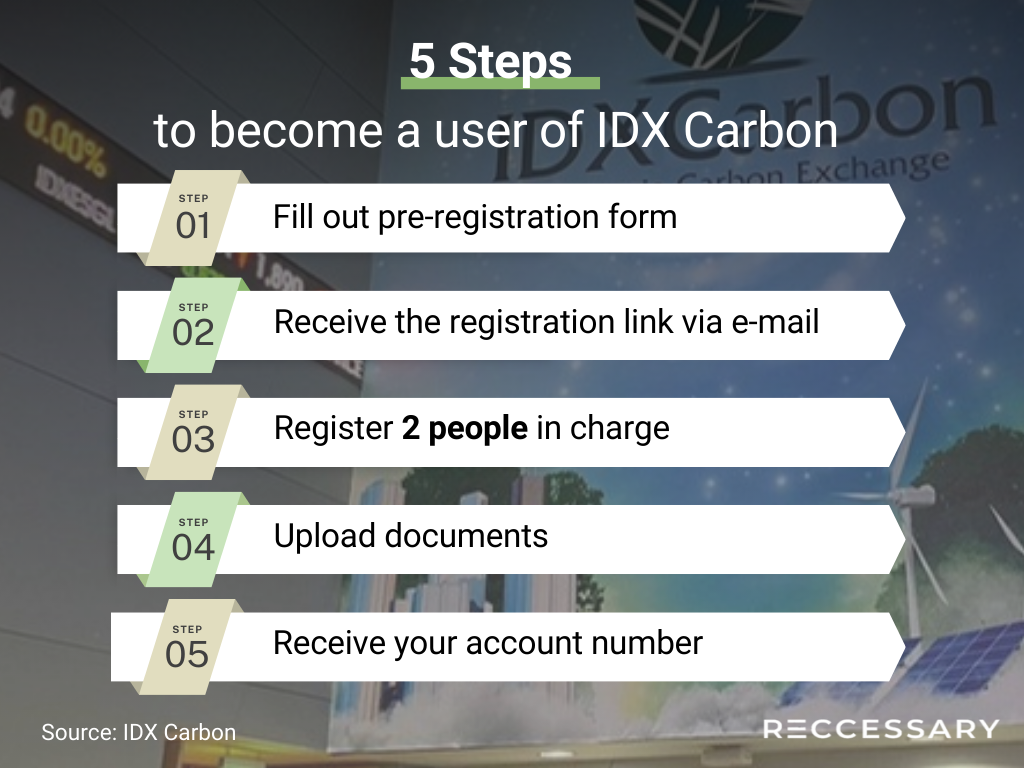.jpeg)
The Indonesia Carbon Exchange opened to foreign buyers in January this year. (Photo:IDX Carbon)
Carbon credit trading is a driving force behind corporate sustainability transformation. The IDX Carbon Exchange, operated by the Indonesia Stock Exchange, was launched in September 2023 and opened to international buyers on Jan. 20, 2024.
This move has injected much-needed liquidity into the market. But how do multinational corporations participate? What qualifications and documents are required? This article provides all the details.
4 trading mechanisms at IDX Carbon Exchange
The IDX Carbon Exchange aims to attract 200 international buyers this year, with a target trading volume of 750,000 tons of CO2 equivalent. The exchange currently offers four trading mechanisms: Auction, Regular Trading, Negotiated Trading, and Marketplace.
- Auction: Carbon credits are auctioned by government bodies or developers through the exchange. The auction includes product descriptions and a reserve price. Buyers set their purchase quantity through the exchange, and prices cannot fall below the reserve price. Ultimately, the seller determines the allocation.
- Regular Trading: Buyers and sellers submit their prices and quantities simultaneously. The exchange matches orders in real-time based on price and time sequence, with the final price determined by market conditions.
- Negotiated Trading: Buyers and sellers agree on terms beforehand and then finalize the carbon credit transaction through the exchange.
- Marketplace: Developers submit project details, including pricing and available carbon credit quantities, to the exchange. Buyers can review all projects and purchase specified quantities of carbon credits at the prices set by the developers. Notably, prices in this trading mechanism are fixed and non-negotiable.
.png)
(Source: IDX Carbon)
International demand boosts trading volume at IDX Carbon Exchange
According to official data, as of Feb. 7, the total trading volume at the IDX Carbon Exchange exceeded 1.33 million tons, with a total value of 6.8 trillion Indonesian rupiahs (about 4.18 million USD). Before the Indonesia Carbon Exchange opened to the international market, the total trading volume was around 1.13 million tons. In less than a month, 200,000 tons were traded, nearly half of the total volume for 2024.
As interest in carbon credits grows, the number of participants in the IDX Carbon Exchange has increased significantly. Registered users have grown by 568%, and the number of active traders has risen from 16 to 107. Among these, the majority (around 54%) are other entities, followed by listed companies and their subsidiaries (about 29%), and state-owned enterprises (BUMN) and their subsidiaries (about 10%).
Overseas companies can participate in IDX Carbon trading and retirement through one of three methods:
- Register directly on the IDX Carbon Exchange website.
- If the company has a subsidiary in Indonesia, they can trade and retire carbon credits through the subsidiary.
- Alternatively, they can work with a registered intermediary to facilitate the transaction and retirement.

To become a registered user, companies must meet the following basic requirements: appoint at least two individuals responsible for company accounts, complete a basic training course, provide a bank account capable of using BI-FAST and BI-RTGS transfer methods, and submit the latest financial report. Overseas users must also provide a Legal Entity Identifier (LEI).
Steps to register on the IDX Carbon Exchange
There are five key steps for registration:
- Fill out the pre-registration form.
- Receive the registration form link, user training link, registration document requirements, and upload folder space via email.
- Applicants must appoint two responsible individuals and participate in bi-weekly training courses.
- Complete the form and upload all required documents to the folder space.
- Once all documents are reviewed and approved, applicants will receive a email notification and account credentials.

IDX allows carbon credit resale with limited trading options
After trading, users can handle their carbon credits in three ways, including resale. However, the resale is limited to Regular Trading and Negotiated Trading. Companies can retire carbon credits to offset their own emissions, with the exchange submitting a retirement request to Indonesia's National Climate Change Mitigation System (SRN-PPI). Alternatively, companies can retire carbon credits on behalf of their client or other stakeholders.
During an online briefing on Feb. 13, Edwin Hartanto, Head of the IDX Carbon Exchange's Carbon Trading Development Unit, stated that to encourage participation, companies that register before September 24 this year will be exempt from the registration fee, and developers will also be exempt from listing fees. Additionally, the exchange does not charge membership fees, annual fees, or dormant fees.
Despite the IDX Carbon Exchange opening to international buyers, many registration documents are still only available in Indonesian. Hartanto mentioned that efforts are being made to improve this, and in the future, instructions related to carbon credit listings will also be available in English, making it easier for non-Indonesian speakers to read and engage in trading, further boosting transaction volumes.



